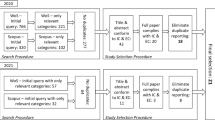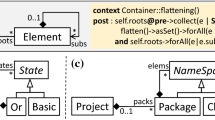Abstract
In November 2000, the OMG made public the MDA™initiative, a particular variant of a new global trend called MDE (Model Driven Engineering). The basic ideas of MDA are germane to many other approaches such as generative programming, domain specific languages, model-integrated computing, generic model management, software factories, etc. MDA may be defined as the realization of MDE principles around a set of OMG standards like MOF, XMI, OCL, UML, CWM, SPEM, etc. MDE is presently making several promises about the potential benefits that could be reaped from a move from code-centric to model-based practices. When we observe these claims, we may wonder when they may be satisfied: on the short, medium or long term or even never perhaps for some of them. This paper tries to propose a vision of the development of MDE based on some lessons learnt in the past 30 years in the development of object technology. The main message is that a basic principle (“Everything is an object”) was most helpful in driving the technology in the direction of simplicity, generality and power of integration. Similarly in MDE, the basic principle that “Everything is a model” has many interesting properties, among others the capacity to generate a realistic research agenda. We postulate here that two core relations (representation and conformance) are associated to this principle, as inheritance and instantiation were associated to the object unification principle in the class-based languages of the 80’s. We suggest that this may be most useful in understanding many questions about MDE in general and the MDA approach in particular. We provide some illustrative examples. The personal position taken in this paper would be useful if it could generate a critical debate on the research directions in MDE.
Similar content being viewed by others
References
Badros GJ (2000) JavaML An XML-Based Source Code representation for Java Programs. http://www.cs.washington.edu/homes/gjb/JavaML/
Bernstein PA, Levy AL, Pottinger RA (2000) A Vision for Management of Complex Systems, MSR-TR-2000-53. ftp://ftp.research.microsoft.com/pub/tr/tr-2000-53.pdf
Bézivin J, Lemesle R (2000) Some Initial Considerations on the Layered Organization of Metamodels. In: SCI 2000/ISAS 2000, International Conference on Information Systems, Analysis and Synthesis, vol IX, Orlando, August 2000
Bézivin J (2001) From Object-Composition to Model-Transformation with the MDA. TOOLS-USA’2001, Santa Barbara, USA
Bézivin J, Gérard S, Muller PA, Rioux L (2003) MDA Components: Challenges and Opportunities. Metamodelling for MDA Workshop, York, 2003
Bézivin J, Gerbé O (2001) Towards a Precise Definition of the OMG/MDA(TM) Framework. ASE’01, Automated Software Engineering, San Diego, USA, November 26–29, 2001
Bézivin J, Jouault F, Valduriez P (2005) The ATLAS Model Management Architecture and ATL papers. http://www.sciences.univ-nantes.fr/lina/atl/
Bézivin J, Lemesle R (1997) Ontology-based Layered Semantics for Precise OA&D Modeling. In: ECOOP’97 Workshop on Precise Semantics for Object-Oriented Modeling Techniques, pp 31–37. http://www.db.informatik.uni-bremen.de/umlbib/conf/ECOOP97PSMT.html
Borning A (1979) ThingLab – A Constraint-Oriented Simulation Laboratory. Ph.D. dissertation, Dep. Computer Science, Stanford Univ., Stanford, Calif., March 1979 (revised version available as Rep. SSL-79-3, Xerox PARC, Palo Alto, Calif., July 1979)
Cantwell Smith B (1985) Limits of Correctness in Computers. Report CSLI-85-36, Center for the Study of Language and Information, Stanford University, California, October 1985, pp 275–293
Encarta MSDN Encyclopedia (2005) http://encarta.msn.com/
Floyd RW (1967) Assigning Meaning to Programs. In: Proc. Symposium on Applied Mathematics, Vol. 1, pp. 19–32. American Mathematical Society
Gabriel G (2002) Objects Have Failed OOPSLA’02 debate. Seattle, Washington. http://www.dreamsongs.com/NewFiles/ObjectsHaveFailed.pdf
Greenfield J, Short K (2003) Software factories Assembling Applications with Patterns, Models, Frameworks and Tools. In: OOPSLA’03, Anaheim, CA, Companion Volume, pp 16–27
Guarino N, Welty C (2000) Towards a Methodology for Ontology-based MDE. In: Bézivin J, Ernst J (eds) First International Workshop on MDE, Nice, France, June 13, 2000. Available from http://www.metamodel.com/IWME00/
Jackson M (1995) The World and the Machine; a Keynote Address at ICSE-17. In: Proceedings of ICSE-17, ACM Press, 1995
Klint P, Lämmel R, Verhoef C (2003) Towards an engineering discipline for grammarware. Working draft paper July 2003. http://www.cs.vu.nl/grammarware/
Kurtev I, Bézivin J, Aksit M (2002) Technical Spaces: An Initial Appraisal. In: CoopIS, DOA’2002 Federated Conferences, Industrial track, Irvine
Ladkin P (1996) On needing models. Universität Bielefeld, 22/02/96. http://www.rvs.uni-bielefeld.de/publications/
Lemesle R (1998) Transformation rules based on metamodeling. In: EDOC’98, San Diego, 3–5 November 1998. http://www.sciences.univ-nantes.fr/lina/atl/publications/
Object Management Group OMG/MOF Meta Object Facility (MOF) Specification, September 1997. http://www.omg.org/docs/ad/97-08-14.pdf
Object Management Group OMG/RFP/QVT MOF 2.0 Query/Views/Transformations RFP, October 2002. http://www.omg.org/docs/ad/02-04-10.pdf
Object Management Group XML Model Interchange (XMI), October 1998. http://www.omg.org/docs/ad/98-10-05.pdf
Rothenberg J (1990) Prototyping as Modeling: What is Being Modeled? Rand Note N-3191-DARPA, July 1990
Rothenberg J (1989) The Nature of Modeling. In: William LE, Loparo KA, Nelson NR (eds) Artificial Intelligence, Simulation, and Modeling. John Wiley and Sons, Inc., New York, pp 75–92
Seidewitz E (2003) What models mean. IEEE Software 20(5):26–32, September/October 2003
Soley R, the OMG staff (2000) Model-Driven Architecture. November 2000. ftp://ftp.omg.org/pub/docs/omg/00-11-05.pdf
Sowa J (2000) Ontology, Metadata, and Semiotics. In: ICCS’2000, Darmstadt, Germany, August 14, 2000. Published in: Ganter B, Mineau GW (eds) Conceptual Structures: Logical, Linguistic, and Computational Issues. Lecture Notes in AI #1867. Springer-Verlag, Berlin, pp 55–81. http://www.bestweb.net/∼sowa/peirce/ontometa.htm
Thomas D (2004) MDA: Revenge of the Modelers or UML Utopia. IEEE Software, May 2004
Author information
Authors and Affiliations
Corresponding author
Rights and permissions
About this article
Cite this article
Bézivin, J. On the unification power of models. Softw Syst Model 4, 171–188 (2005). https://doi.org/10.1007/s10270-005-0079-0
Published:
Issue Date:
DOI: https://doi.org/10.1007/s10270-005-0079-0




